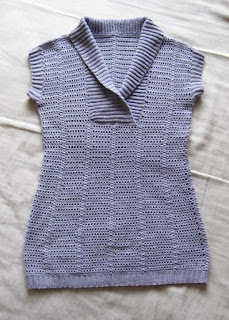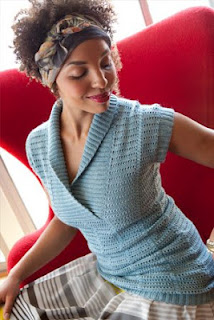Then I had to wait for the yarns....I received it only in the middle of January 2012 (probably got delayed because of the holiday season).
I had to work on the sample right away. I also didn't have time to make changes on my original design and pattern since there wasn't much time. I was fairly confident, but I almost didn't make it to the deadline. By the time I finished, it only had 3 days to fly and arrive to its destination in the U.S. I mailed it via Express Mail Service at the Post Office. (I trust Philpost more than Fedex, and its less expensive too..)
Now I present here my latest published design, but before that some behind the scenes pics and some notes.
Last February 2011, I blogged about crochet ribbing.in this post. I showed a project using a hdc ribbing. That project was to become a tunic. I don't know exactly how yet, but I started with a bottom edge of hdc ribbing. The inspiration for the design came from this knitted tunic (my son suggested this while he was looking for design ideas for me):
After I decided to use the hdc ribbing, I thought the main stitch should be a bit interesting, but easy. I recalled the stitch pattern in my old project...so I based the main stitch pattern on it:
After repeating the sleeve edging twice and collar three times to get it right, I was finally happy with the design. This is the first sample I made using Cannon cotton threads:
I was excited to make the sample for Interweave, but unfortunately the yarns arrived a bit late...
Got the yarns on january 17, 2012
Soft, cuddly yarn
Winding the yarn....
When I began crocheting, I didn't have time to take progress pics as I was already running after the deadline. But when I finished it, I still have a bit of time left to try it on and have my son take pics ;)
Finally, here is the professional model on the magazine :)
Btw, while you were not looking the Lauren Sweater was on the Top 5 patterns on Ravelry...hehe

















